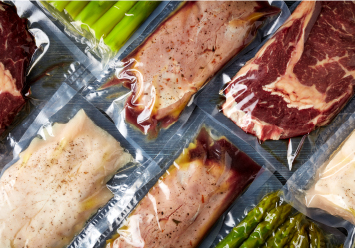
By Michael Uetz, managing principal, Midan Marketing
Earlier this year, I had the privilege of meeting in person once again with individuals from all parts of the meat industry during the 2023 Annual Meat Conference. In the three years since the last conference, our world has been completely disrupted by COVID-19. Every conversation at this year’s AMC was at least a little bit colored by how the pandemic has continued to impact the economy. Some of the conversations I was most engrossed in were around inflation, labor, case ready packaging, technology and how these topics are all intertwined. The following are some highlights of those discussions.

Inflation
The state of the economy isn’t news to anyone. Our consumers are struggling with the price of goods every time they go to the store. Right now, inflation on meat products is significantly less than the inflation on other products around the store; however, because meat is generally one of the most expensive products going in their basket, consumers really feel the pinch when buying proteins.
Many packers and retailers alike are turning to value messaging to remind consumers of all the ways our product makes their lives better. But the value messaging from the 2008 recession won’t work today. The COVID-19 pandemic changed consumers’ priorities. Some consumers now value health above all else, for example picking packages that clearly label protein content or searching for claims they feel make a product healthier, like an All Natural label.
Many busy consumers are looking for convenience – but whether that’s an easy crockpot roast, a pre-marinated pork loin or a fully cooked rotisserie chicken depends completely on who your store’s customer is. Consumers today are very conscientious of where they’re spending their dollars and we have to make sure the products we’re serving up align with what they value.
Labor
The labor shortage in the U.S. has played into and likely exacerbated inflationary pressure. Commonly, the solution to labor shortages is to increase wages – but that almost always means having to increase prices, too. This can’t be easily fixed but we can be diligent about how we allocate the labor we do have and what resources can help limit the amount of labor required.

In 2023, 83 percent of meat consumers shop at a grocery store where they have access to a full-service counter in the meat department. Across all meat consumers, 70 percent say they value having access to a full-service counter, whether or not they’ve ever used it.1 But there are consumers who value it more than others. Baby boomers, shoppers at organic food stores and high-income shoppers are all demographics that generally place a higher value on this service. If this doesn’t sound like your shopper, the full-service counter may not be the best use of your limited labor.
At the same time, the number of meat consumers who say they think it’s important to have someone assist with decisions at the self-service meat case is increasing. Nearly half of meat consumers think it’s important to have someone assist with tips, suggestions or customizing amounts at the meat case – an 11 percent increase from just last year.
This preference, too, varies by demographic with those who find it most valuable skewing toward Millennials, shoppers who frequently buy value added meat products and shoppers who frequently look for meat department promotions.1 Knowing your shopper is the first step, though, in making changes to how they select products in your store.
Case ready packaging
There are other ways to alleviate the labor shortage, including things like case ready packaging. Because these types of packaging don’t require cutting or packaging in-house, they are simple to stock and restock.
This style of vacuum-packed packaging was already gaining in popularity pre-pandemic. And today, 86 percent of meat consumers believe case ready meat is the same quality or better than meat that appears to be cut and packaged in-store. This is an 11-point increase since 2018.1

During the pandemic, consumers who were freezing meat to combat out-of-stocks likely found that meat in case ready packaging didn’t have to be repackaged before freezing. They were using more grocery pickup or delivery services, which benefited from the fact that case ready packaging doesn’t leak the way overwrap can. Now as they deal with increased prices, meat in-case ready packaging is again winning the day as these products are more likely to be a consistent weight and there’s less guessing about how much the product will end up costing when purchasing online.
Technology
Finally technology – every day I see an article about AI or automation or some other new technology that promises to make everything easier for our industry. From AI that automatically marks down products that aren’t moving quickly enough to selling the data you amass from your loyalty or discount cards – tapping into today’s technologies could turn retail grocery on its head.
Most consumers won’t mind technology that marks down products and makes it easier for them to stick to their budget. The same may not be true for selling their data. However, if your demographic is young, many of these consumers expect you to sell their data in favor of a better shopping experience with more targeted ads and promotions. So just like in all things – the first step is knowing who your consumers are and what they are prioritizing when shopping at your store.
To help the meat industry best understand their shoppers, Midan is preparing to release the third edition of its Meat Consumer Segmentation research this year. This research looks at the ways meat consumers plan and shop for meat products today.
To be among the first to know when this research is released, sign up for e-mail notifications online here.
1 Anne-Marie Roerink, Principal, 210 Analytics LLC, The Power of Meat 2023. Report sponsored by Sealed Air Food Care Division/Cryovac and published by FMI and the Foundation for Meat and Poultry Research and Education.
To read more meat news from The Shelby Report, click here.

